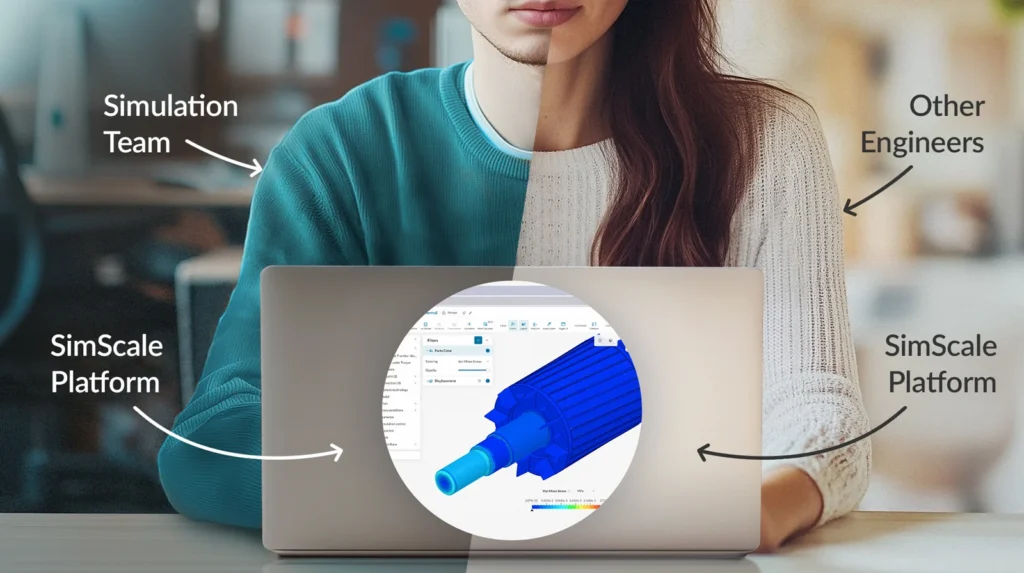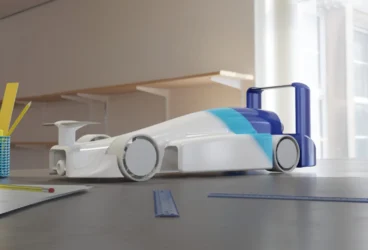We are solving the wrong problem.
Many companies talk about democratizing simulation, but most have been doing it wrong!
Of course, the end goal is compelling, as we all need more people empowered to simulate, push the design envelope, and enable their companies to gain that all-important competitive advantage.
But so far, the singular focus has been on making simulation easier to use for any engineer – and while that sounds great in theory, it overlooks a critical issue. ‘Ease’ cannot be defined simply by how well a simulation provider follows good practices in software UX and usability design. Instead, it must focus on how easily end-user engineers can have simulation work accepted within their company.
Simulation teams, who are responsible for ensuring the accuracy of simulations, must still verify work done by others before signing it off. To do so, they need both visibility into and confidence in the process. The experts need to approve when a design team adopts new simulation tools, and they need clear oversight and control. Without this visibility, I would argue we are not making progress; we are moving further from real democratization.
The solution: Guided simulation workflows. These workflows bridge the knowledge gap between the simulation team and their design engineer colleagues. The simulation team maintains full ownership and centralized control, while engineers can simulate with confidence, knowing they are following an approved process.

What is a Guided Simulation Workflow?
SimScale’s guided simulation workflows are more than mere workflows—they are the future of widely distributed engineering simulation at scale. Created and maintained by simulation experts, these repeatable workflows enable the wider organization while remaining locked to editing so that only the expert owner can make changes.
Anyone can use the workflows, knowing that they are following a strictly defined process and that their results will be trustworthy and pre-approved. They work alongside ease of use to ensure centralized control while empowering teams to move faster and innovate.
With guided workflows, engineers don’t have to wonder if their results are accurate – they are, by design.
A Simple but Powerful Framework
For the end user, a SimScale Guided Simulation Workflow looks like this:
- Import your CAD file into a SimScale template.
- Adjust simulation parameters based on your company design guide.
- Run the simulation in the cloud and get instant, standardized results.
- Access, track, and share your results in SimScale from anywhere and with any team member.
- Sync your results with your PLM system for seamless integration into your workflow.
The result: Fully automated and approved simulations, where results are generated and reported without additional user input. Now that’s engineering efficiency.
Here’s a 1-minute video of how such simulations can be run.
Why You Need Guided Simulation Workflows
For most engineering teams, time is not on their side. Most of our customers would agree that the status quo is insufficient and that things need to change for businesses to stay competitive in today’s rapidly evolving market.
The automotive industry is an obvious example: internal combustion engines (ICEs) are on their way out as EVs and other new technologies transition in at speed. Companies that can’t pivot quickly enough will lose market share and margins. We do not have to look very far to see stories of companies in this sector that are facing the challenges inherent in moving too slowly.
Simulation lead times are a recognized bottleneck. Running complex simulations takes time, and most simulation teams are already stretched too thin to respond as needed.
The solution is automation that empowers design teams to run their own simulations whilst ensuring centralized controls and oversight. This blend of both enablement and control is imperative to help unlock the required innovation and speed needed in the business.
Guided simulation workflows enable design teams to simulate on their own, store their results in the PLM system alongside the simulated assembly, and finalize their designs without using the simulation team’s valuable time.
The result: minimized simulation lead time, maximized efficiency, and faster innovation.

The Good News: Engineers are Already Asking for This
- Simulation engineers need to offload routine work to focus on higher-value tasks that really push the envelope and maintain competitiveness.
- Designers want to get answers without needing weeks of training, hand-holding or waiting for approval.
- Management teams need to see efficiency and efficacy gains and they look to bring their vision to reality and respond rapidly to evolving market demands.
Guided simulation workflows enable all of the above. If you’re not adopting them already, it’s time to change. Your goal of true simulation democratization demands it.


